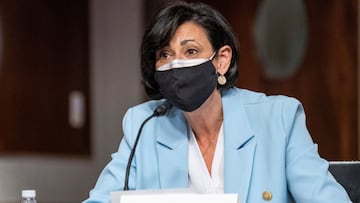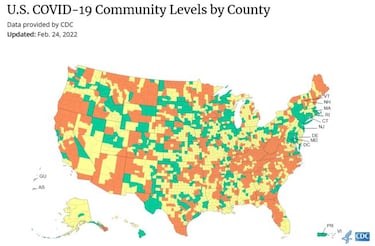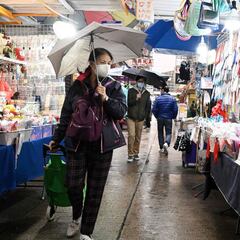CDC's mask use recommendation by county: green, yellow or red, what's the color in my county?
The CDC has updated its mask wearing guidance, relaxing recommended use for around 70 percent of the US population in counties where transmission is lower.

The CDC has relaxed its recommended mask use guidance, shifting the focus away from solely infections to minimizing severe illness and hospitalizations. The new system uses a three-color system to indicate risk of transmission.
Those in counties with the lowest risk can ditch their masks if they choose while those in high-risk counties, currently 37 percent of US counties, are still recommended to wear masks in indoor public settings and schools.
Also see:
- For how long does the booster shot protect you from covid-19?
- What are the origins of the covid-19 pandemic?
- Will the covid pandemic end in 2022?
- Do all viruses weaken over time?
What is the CDC color-coded system?
The CDC is determining the risk level present across the US county by county, looking at hospital beds being used, hospital admissions, and the total 7-day average number of new covid-19 infections. The three levels of risk are indicated using the colors green, yellow and red representing low, medium and high risk, respectively.
“This updated approach focuses on directing our prevention efforts towards protecting people of high risk for severe illness and preventing hospitals and health-care systems from being overwhelmed,” said Dr. Rochelle Walensky, director of the Centers for Disease Control and Prevention (CDC). The move came because “widespread population immunity, the overall risk of severe disease is now generally lower,” according to the CDC director.

What do the colors on the CDC map mean?
Under the color-coded system the risk of covid-19 is low for people that live in green counties, wearing masks will be optional. Yellow counties, where there is a medium risk of transmission, people who are at high risk are recommended to ask their doctor about wearing a mask. Those that live in counties with high rates of covid-19 are recommended to wear high-quality masks in indoor public places, including schools.
Green and yellow counties represent 63 percent of counties in the US and encompass 30 and 42 percent of the US population, respectively. Although mask wearing is now optional in these areas, you should still don a mask if you have symptoms, test positive or have been exposed to someone with covid-19, especially if you live with someone who is at high risk of severe disease.
The CDC continues to recommend that you get vaccinated and boosted, as well as tested if you feel sick. You can check whether masks are recommended for your county at the CDC website.
NEW: CDC is releasing a new tool to measure and monitor the level of #COVID19 in communities that includes hospitalizations, hospital capacity, and cases.
— Rochelle Walensky, MD, MPH (@CDCDirector) February 25, 2022
On today’s #DirectorDebrief, I am joined by Dr. Greta Massetti, to discuss this new approach. pic.twitter.com/EwVgqR0kZD
The guidance is subject to change
Related stories
When the CDC director announced the changes to mask use recommendations she said “We want to give people a break from things like mask-wearing when our levels are low.” But warned "None of us know what the future may hold for us and for this virus. We need to be prepared, and we need to be ready for whatever comes next.”
Over the past two years of the covid-19 pandemic it has appeared at times that the worst of it was behind us. That gave a false sense of security only for an even greater surge of infections to swamp hospital systems and staff. Even though people can take off their masks now, Walensky said we’ll “have the ability to reach for them again, should things get worse in the future."


